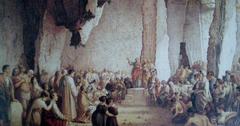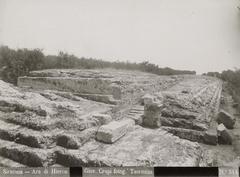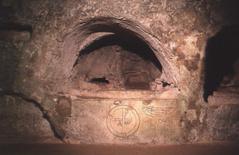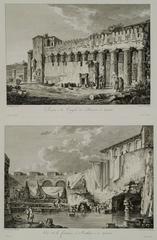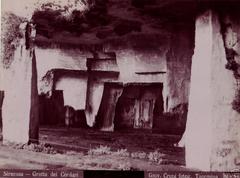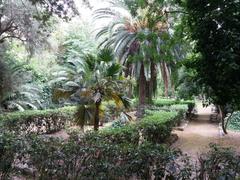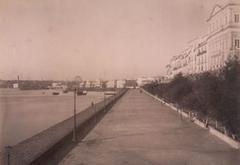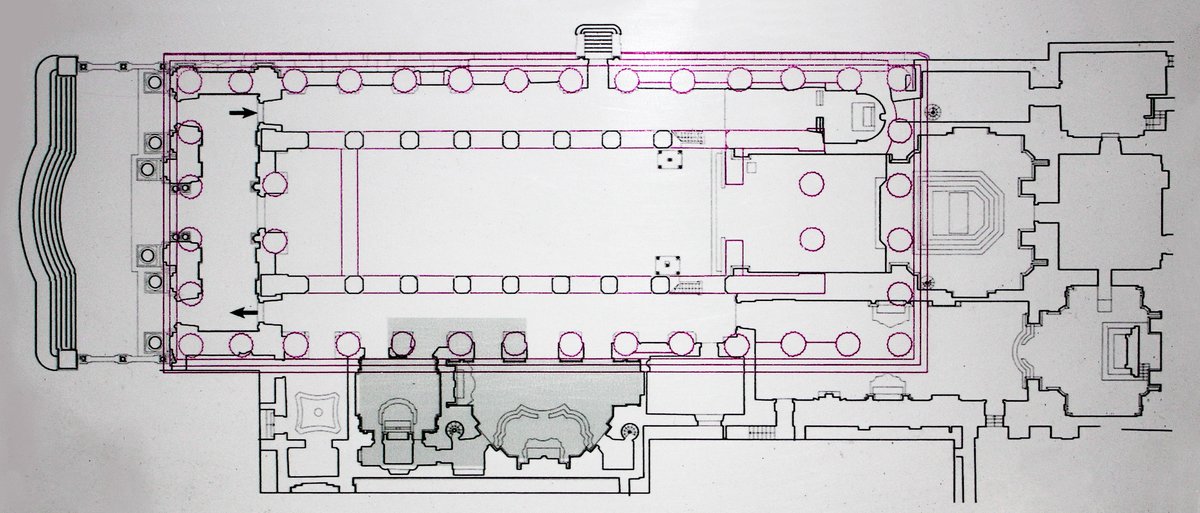
Guide to Visiting Cattedrale di Siracusa in Syracuse, Italy
Date: 18/07/2024
Introduction
The Cattedrale di Siracusa, also known as the Cathedral of Syracuse, is a magnificent landmark that encapsulates the rich history and diverse architectural styles of Syracuse, Sicily. This iconic site stands as a testament to the city’s layered past, having evolved from an ancient Greek temple dedicated to Athena, constructed in the 5th century BCE, to its modern-day status as a revered cathedral. The cathedral’s structure itself is a living museum, illustrating the transitions through Greek, Byzantine, Norman, and Baroque influences (Syracuse Cathedral). Visitors can marvel at the ancient Doric columns that have been seamlessly integrated into the cathedral’s walls, offering a tangible link to its ancient origins. The cathedral’s historical significance is further enriched by its role as a religious and cultural epicenter in Syracuse, attracting pilgrims and tourists alike to admire its architectural grandeur and historical artifacts (Norman Architecture). Whether you’re drawn by its spiritual significance, historical depth, or architectural beauty, the Cattedrale di Siracusa offers a unique and enriching experience for all who visit.
Table of Contents
- Introduction
- History of Cattedrale di Siracusa
- Visitor Information
- Nearby Attractions
- Accessibility
- Key Historical Events
- Architectural Highlights
- FAQ
- Conclusion
History of Cattedrale di Siracusa
Ancient Origins
The Cattedrale di Siracusa stands on the site of an ancient Greek temple dedicated to Athena, constructed in the 5th century BCE during the reign of the tyrant Gelon. This Doric temple was a symbol of the city’s prosperity and power, reflecting the architectural grandeur of ancient Greek civilization. The temple’s columns, some of which are still visible today, were incorporated into the walls of the current cathedral, providing a tangible link to its ancient past (Syracuse Cathedral).
Byzantine Transformation
In the 7th century CE, the temple was converted into a Christian church by the Byzantines. This transformation marked a significant shift in the religious landscape of Syracuse, as the city transitioned from paganism to Christianity. The church was dedicated to the Nativity of Mary, and significant modifications were made to the structure, including the addition of a nave and aisles. The Byzantine influence is evident in the mosaics and other decorative elements that were added during this period (Cattedrale di Siracusa).
Norman Conquest and Gothic Influence
The Norman conquest of Sicily in the 11th century brought another wave of architectural and cultural changes to the cathedral. The Normans, known for their distinctive Romanesque style, added a new façade and fortified the structure, transforming it into a more imposing and defensible building. The Gothic influence is particularly evident in the pointed arches and ribbed vaults that were introduced during this period. The Normans also rededicated the cathedral to the Assumption of the Virgin Mary, a dedication that remains to this day (Norman Architecture).
Baroque Renovations
The 17th century saw the cathedral undergo significant Baroque renovations, particularly after the devastating earthquake of 1693 that struck the Val di Noto region. The façade, which had been damaged, was rebuilt in the Baroque style by the architect Andrea Palma. This new façade, completed in 1753, features elaborate decorations, including statues of saints and intricate carvings, which are characteristic of the Baroque period. The interior was also richly decorated with stucco work, frescoes, and marble, reflecting the opulence and grandeur of Baroque art and architecture (Baroque Architecture).
Modern Era and Preservation
In the modern era, the Cattedrale di Siracusa has been the focus of numerous preservation efforts to maintain its historical and architectural integrity. These efforts have included structural reinforcements, restoration of artworks, and careful maintenance of the ancient columns and other historical elements. The cathedral remains an active place of worship and a major tourist attraction, drawing visitors from around the world who come to admire its unique blend of architectural styles and its rich historical legacy (Syracuse Cathedral Restoration).
Visitor Information
Ticket Prices and Visiting Hours
Travel Tips
- Best Time to Visit: The best time to visit is during the spring and fall when the weather is mild and the tourist crowds are smaller.
- Photography: Photography is allowed inside the cathedral, but flash is prohibited to protect the artworks.
Nearby Attractions
Accessibility
The cathedral is wheelchair accessible, with ramps and elevators available for those with mobility issues. There are also facilities for the visually and hearing impaired to ensure an inclusive experience for all visitors.
Key Historical Events
Several key historical events are associated with the Cattedrale di Siracusa. One of the most notable is the visit of Saint Paul the Apostle, who is believed to have preached in Syracuse during his journey to Rome around 60 CE. This event is commemorated by a plaque inside the cathedral. Another significant event is the canonization of Saint Lucy, the patron saint of Syracuse, whose relics are housed in the cathedral. The annual feast of Saint Lucy, celebrated on December 13th, is a major event in the city, drawing pilgrims and visitors to the cathedral (Saint Lucy).
Architectural Highlights
The cathedral’s architecture is a fascinating blend of different styles and periods. The ancient Greek columns, visible in the nave, are a striking reminder of the building’s origins. The Norman apse and transept, with their Romanesque features, contrast with the Baroque façade and interior decorations. The cathedral also houses several important artworks, including a 15th-century statue of the Madonna and Child and a 16th-century painting of the Assumption of the Virgin Mary. These elements together create a unique and harmonious architectural ensemble that reflects the rich history of Syracuse (Architectural Highlights).
FAQ
What are the visiting hours for Cattedrale di Siracusa?
The cathedral is typically open from 9:00 AM to 5:00 PM, but it’s advisable to check the official website for any changes in the schedule.
How much do tickets cost?
Tickets are reasonably priced, with discounts available for students, seniors, and groups. Check the official website for the latest pricing information.
Is photography allowed inside the cathedral?
Yes, photography is allowed, but the use of flash is prohibited to protect the artworks.
Are there guided tours available?
Yes, guided tours are available and highly recommended to fully appreciate the historical and architectural significance of the cathedral.
Is the cathedral accessible for visitors with disabilities?
Yes, the cathedral is wheelchair accessible, with ramps and elevators available for those with mobility issues. Facilities are also available for the visually and hearing impaired.
Conclusion
The Cattedrale di Siracusa stands as a monument to the city’s enduring legacy and its ability to adapt and thrive through centuries of change. Its history is a microcosm of the broader historical and cultural currents that have shaped Sicily and the Mediterranean region. For visitors, the cathedral offers not only a glimpse into the past but also an opportunity to appreciate the artistic and architectural achievements of different eras. Don’t miss out on this historical gem when you visit Syracuse. Plan your trip today and experience the grandeur of the Cattedrale di Siracusa!
Call to Action
Ready to explore more of Syracuse’s rich history? Download our mobile app Audiala for a guided tour, check out our other related posts, and follow us on social media for more updates.
References
- Syracuse Cathedral, 2024, Italy Guides https://www.italyguides.it/en/sicily/syracuse/syracuse-cathedral
- Norman Architecture, 2024, Britannica https://www.britannica.com/art/Norman-architecture
- Baroque Architecture, 2024, Britannica https://www.britannica.com/art/Baroque-architecture
- Syracuse Cathedral Restoration, 2024, Sicily.co.uk https://www.sicily.co.uk/places-to-visit-in-sicily/syracuse/syracuse-cathedral/
- Saint Lucy, 2024, Catholic Online https://www.catholic.org/saints/saint.php?saint_id=75

